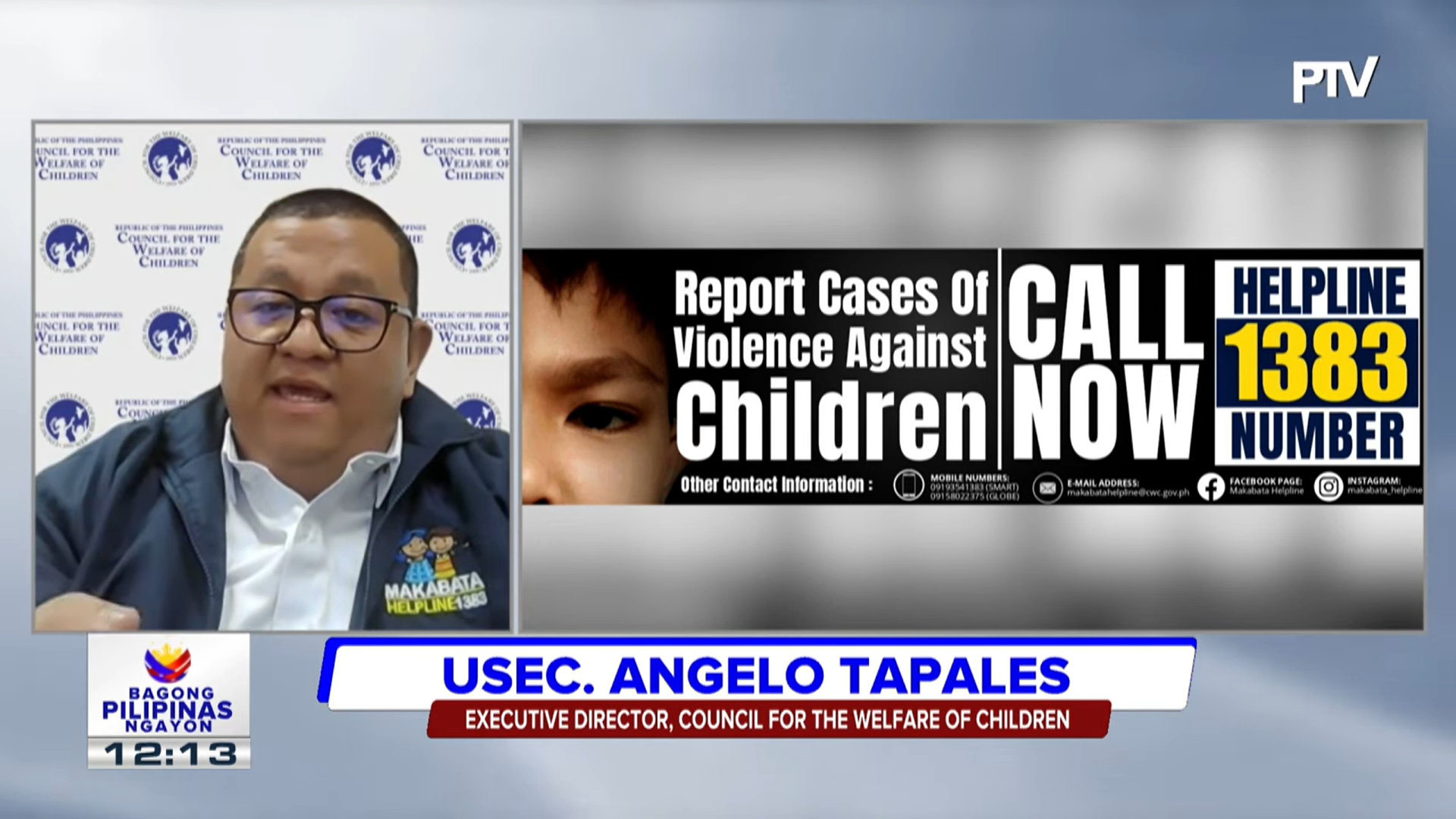
By Brian Jules Campued
The Philippine National Police Women and Children Protection Center (PNP WCPC) has recorded at least 17,681 child abuse cases in 2023, the Council for the Welfare of Children (CWC) Executive Director Angelo Tapeles revealed on Thursday.
In a Bagong Pilipinas Ngayon interview, Tapeles said that the majority of these cases violated Republic Act No. 7610 or the Special Protection of Children Against Abuse, Exploitation and Discrimination Act.
The top three cases are child abuse, rape, and acts of lasciviousness, he added, citing data from PNP WCPC.
While said figure showed a decline from 2022’s record of at least 19,000 cases, Tapeles maintained that around 97% of these cases were still composed of the same child rights violations.
“Nakakabahala po ‘yan kasi po nung 2022, same child rights violations din po yung top three, RA 7610, rape, acts of lasciviousness. Kaya po nakabantay po kami,” he said.
Tapeles noted that by third quarter of last year, there are at least 1,000 children who suffered online sexual abuse.
“Mga 300 plus ang kanilang kinakasuhan ngayon,” he continued.
However, the CWC lacks data on the conviction rate for perpetrators but Tapeles emphasized that investigations should start immediately after the complaint has been filed and all the pieces of evidence were submitted to the police or the prosecution.
The government provides emergency shelter, counseling, free legal assistance, medical and psychological services, livelihood and skills training, and education assistance for the victims, according to Tapeles.
The CWC undersecretary also reported that a local telecommunications company blocked over 900,000 websites that featured online child abuse in 2023.
“May isang telecom company po na nagsabi sa amin na nung 2023, meron silang na-block na mga bastos na site o may mga OSAEC/CSAEM (Online Sexual Abuse or Exploitation of Children/ Child Sexual Abuse or Exploitation Material) na site, 902,000 sites po ang pinag-uusapan natin,” Tapeles stated.
He also said there were 2.16 million blocked attempts to access these websites.
The CWC director explained that for cases of online sexual abuse, the perpetrator is usually the parents or the relative due to their close proximity to their children.
“There is a wrong mentality that children should contribute to the income of the family. That’s why tingin nila okay lang picturan ang mga bata, i-video para ibenta ‘yan,” said Tapeles.
‘New species of potential violators’
Meanwhile, Usec. Tapeles also assured the public that the agency is on the lookout for the proliferation of Child Sexual Abuse and Exploitation Materials (CSAEM) created through artificial intelligence (AI) tools and image editing software in the Philippines.
Cybercriminals can digitally superimpose photos of children to create new images that show nudity or other child sexual abuse and exploitation acts which are then sold or traded online through the “dark web”.
“Yung mga taong ‘di kayang humawak ng bata, but merong technical knowledge, may perang pambili ng hardware/software, pwede po silang gumawa ng unlimited number of [AI-generated] pictures at ibenta sa dark web ‘yan, it’s really alarming that’s why we have stumbled upon a new species of potential violators,” said Tapeles.
However, he clarified that the country has yet to report such cases, though it has been monitored in other countries.
“Batay po sa mga pag-aaral po sa ibang bansa, meron silang na-monitor na ganito. Of course ang pangamba po nila, photo-realistic images daw po ang nakre-create. Talaga pong nakakabahala kaya po binabantayan po natin,” he added. – avds
